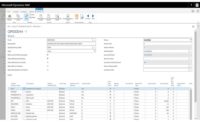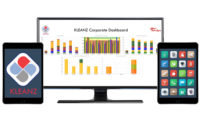In today’s snack and bakery industry, clear-cut traceability is vital to success and longevity—especially when there is a recall and ingredients need to be tracked. Luckily, new software and technology can help facilitate accurate traceability, making life easier for snack and bakery manufacturers.
Top concerns
“Ensuring the safety of food ingredients and finished products to protect public health is the biggest challenge,” says Scott McKenzie, regional account manager, RFgen Software, El Dorado Hills, CA. He says that the complexity and time required to track ingredients in the event of a recall scenario is significant when the facility operates within a supply chain involving multiple partners, stakeholders and regulating government committees.
“Food traceability is the ability of a business to track the movement of various food products—raw materials, food components, finished food products—throughout the entire supply chain stage, from manufacturing to processing and on to market distribution,” explains McKenzie.
Technology such as a data collection or barcoding system fed through mobile devices allows ingredient-level traceability throughout the food processing plant, says McKenzie. Ingredients all the way up to the final products can be traced within a matter of minutes.
“Consumers are increasingly conscious of the origins of the ingredients in the products that they purchase, making traceability throughout the supply chain a pressing concern for manufacturers,” says Simon Brayn-Smith, vice president, global head of sustainability, Olam Cocoa, London. “Therefore, manufacturers will need to carefully partner with suppliers who have the capabilities to deliver transparency and traceability as far up the supply chain as possible. Also, with products that contain a variety of ingredients from global sources, traceability is essential for maintaining rigorous food safety standards.”
Brayn-Smith says that the contribution that companies like Olam Cocoa can make to traceability is often most significant at the farm level, but this in itself is a complex challenge. “Collecting reliable and consistent data about ingredient origins and the environmental, operational and social footprint at the source of the ingredients’ supply is difficult and expensive. This is particularly acute in the cocoa industry, where supply is sourced from multiple smallholder farmers in remote regions of the world.”
It’s also a challenge for manufacturers to know much about individual farmers growing their cocoa, given that cocoa beans can pass through many intermediaries across different countries before reaching the processing stage, Brayn-Smith notes.
Keeping track of ingredients can prove challenging, notes Marc Braun, president, Pcdata Inc., East Granby, CT. “There are several main concerns that bakery and snack operations face when it comes to product traceability. Traceability is very important from both an accounting and profitability point of view, as well as in cases of health and safety issues in which a recall is required.”
The baking industry is so service-minded that sales might adjust orders up until the last minute, says Braun. “Because of the short shelf life and demand for freshness, production gets wrapped and shipped off as it comes off the line. It’s all very dynamic and hard to keep track of what was made, what was ordered, what’s in yesterday’s inventory and what orders got fulfilled and loaded into the (right) truck.”
Christine Akselsen, CEO, Kezzler, Oslo, Norway, says that traceability concerns relate to multiple aspects of operations, ranging from food safety to inventory management. “When it comes to food safety, brands need to keep track of a vast array of information regarding both the contents and provenance of finished products, as well as their production history. Being able to trace products back to inputs and suppliers not only promotes food safety, but in the event that a recall is required it ensures minimal wastage through a highly targeted recall.”
Having accurate, real-time information about products as they move through the supply chain is also essential for an efficient operation and business planning purposes, helping brands to remain competitive, Akselsen remarks. Furthermore, traceability is key when it comes to meeting growing consumer demand for additional information about their food and where it comes from.
Streamlining through technology
“Serialization technology can be used to provide supply chain visibility,” says Akselsen. “For example, in the case of Kezzler’s technology, every item is given a unique, secure and traceable identity in the form of a code, which can be embedded into a QR code, NFC (near field communication) or other label and placed on the product.” This code enables brands to track products from creation to consumption, garnering deeper insights into the product journey and the entire product life cycle, she notes.
In the snack food and bakery industry, Kezzler codes serve as a foundation for numerous application that support the running of an efficient operation, including production control and validation, product history and tracking, and recall and expiration date handling, explains Akselsen.
“Digitizing products also enables brands to share additional product information with the consumer beyond what can be displayed on the packaging, with a simple scan of their phone,” says Akselsen. “This helps brands meet the growing demand for transparency by providing information regarding an array of considerations, ranging from health-related topics such as allergens and nutrition to ethical and environmental concerns regarding provenance.”
SICK AG, Bloomington, MN, provides a comprehensive range of devices and equipment used by traceability systems of all types around the world, says Mike Hughes, managing director. Over the past 15 years, SICK has had a relationship with AutoCoding Systems Ltd., Runcorn, England, which makes a software product that automates packaging lines and that has a strong presence in the food industry. “The product is most often used to automate packaging line devices within a single line set-up workflow that incorporates date code printing devices, as well as all other packaging line equipment—e.g., metal detection, X-ray and checkweighers, as well as labeling for box and pallet.”
Using technology, and lights in particular, to spread production across orders as they come off the line is more accurate and faster, and allows operations to stay on top of production details, which orders have been filled and where the orders are now, all in real-time, says Braun. It’s considerably harder to track and trace production to final destination or inventory when not using technology to fill orders, he says. “Printing paper orders and then re-entering what’s happened with the produced goods, what’s leftover, etc. is too slow and prone to human error. As a result, shipping and operations are always running after the facts, never able to stay on top of the situation in real-time.”
Brayn-Smith says that digital resources are transforming the traceability of the cocoa supply chain. AtSource from Olam has been developed to trace cocoa from the field to the factory gate by collecting and sharing detailed data points throughout the entire supply chain. This guarantees traceability and informs manufacturers of the environmental and social impact of the ingredients they have purchased, enabling them to set targets for improvements. “Building on this, we can now geotag every bag of cocoa through a unique barcode, offering assurance to the manufacturer of where exactly the ingredient originated.”
In terms of farming itself, the Olam Farmers Information System (OFIS) delivers GPS mapping of individual cocoa farms, adds Brayn-Smith. “By building a detailed picture of the location and characteristics of each individual farm, farm development plans can be created for farmers and their surrounding communities that are specific to their needs. In turn, this provides manufacturers with greater assurance about the reliability, quality and sustainability of their cocoa bean supply at origin.”
Blockchain rising
Blockchain is also a good choice for improving transparency. “Originally developed to verify the exchange of cryptocurrency, blockchain provides an immutable, decentralized ledger of transactions between connected parties,” explains Pratik Soni, co-founder and CEO, Omnichain Solutions, Los Angeles.
“Each transaction is recorded in a digital ‘block’ and assigned a unique cryptographic signature,” says Soni. “These blocks log information, such as date, time, cost, location and involved parties. When the next transaction occurs, a block records new information, and incorporates the original information of the previous one, linking the two together. The chain continues so on and so forth—hence, the name of the technology.”
By linking all records from source to shelf in a distributed ledger, blockchain provides irrefutable proof about where a product came from, how it has been handled, and who has touched it, adds Soni.
“This level of transparency can help with ensuring food safety and proper labeling, such as guaranteeing if a product is genuinely organic, gluten-free, dairy-free, peanut-free, etc. Since all transactions are permanently logged, food companies can use blockchain to easily trace any food safety concern to its source, thereby protecting consumers and mitigating the cost of recalls,” Soni says.
Moreover, with real-time insight into the supply chain, companies can see what people are currently buying and what products are nearing expiration, notes Soni. “Rather than react after the fact, they can proactively plan production upstream and get exactly the right foods—including types and quantities—to stores that satisfy demand with less waste and more profitability.”
New solutions
Software and technology in the traceability sphere is always evolving.
“We’ve added some pretty advanced technology for networks that ship from multiple sites to multiple distribution centers and still allow for tracking of the cross-docked product,” says Braun. “We even allow for products to be tagged to the final destination of the secondary site. Very neat and very efficient.”
Pcdata also introduced new overhead displays which, in addition to the standard customers and quantities for order filling, can provide feedback to the operator how much of the order has been built, or provide feedback on the status of the truck for which the order is needed.
Olam Cocoa continues to progress toward achieving its goal of delivering 100 percent traceable cocoa volumes from direct origination supply chain by 2020. AtSource was a major milestone for Olam in the past year, says Brayn-Smith. “Being able to equip our manufacturing and retail customers with tools such as a digital dashboard and eco-calculator to access these insights quickly is a major step in driving transparency. However, the real value is how this knowledge can be used to help our customers make informed choices to meet and report on their own sustainability targets, mitigate risks and measure positive impact.”
In 2019, up to 6 billion products will be carrying unique Kezzler codes globally, says Akselsen. Pre-serialized labels can be provided—these are simply applied to the existing packaging and then activated as required.
“Secondly, the codes can be printed inline. Kezzler’s technology can integrate with any system, and as pioneers of mass serialization, we have built unique competence in deploying solutions in high-volume production facilities and integrating serialization into a company’s existing IT architecture,” Akselsen explains.
Brands can also opt to pre-serialize their products using Kezzler’s patented technology, notes Akselsen. “For example, our joint offering with global packaging leader Amcor, MaXQ, enables companies to digitize their products in this way. A unique code integrated into the product packaging is simply activated at a later stage via the cloud, minimalizing the operational burden.”
Driven by the expectation of younger workers and government compliance regulations that expect digitized operations, more manufacturers in the industry are adopting the philosophy of digitalization, using a combination of enterprise resource planning (ERP) software that integrates with mobile devices and barcoding, rather than relying on fixed terminals, says McKenzie.
“RFgen’s mobile data collection solution simplifies the integration of mobile devices to extend the functionality of an organization’s ERP system, using an intuitive user interface that is flexible for operations spanning the entire shop floor, from the receiving line to ingredient programming and packing and shipping,” says McKenzie. “The push for digital transformation is stronger than ever.”







